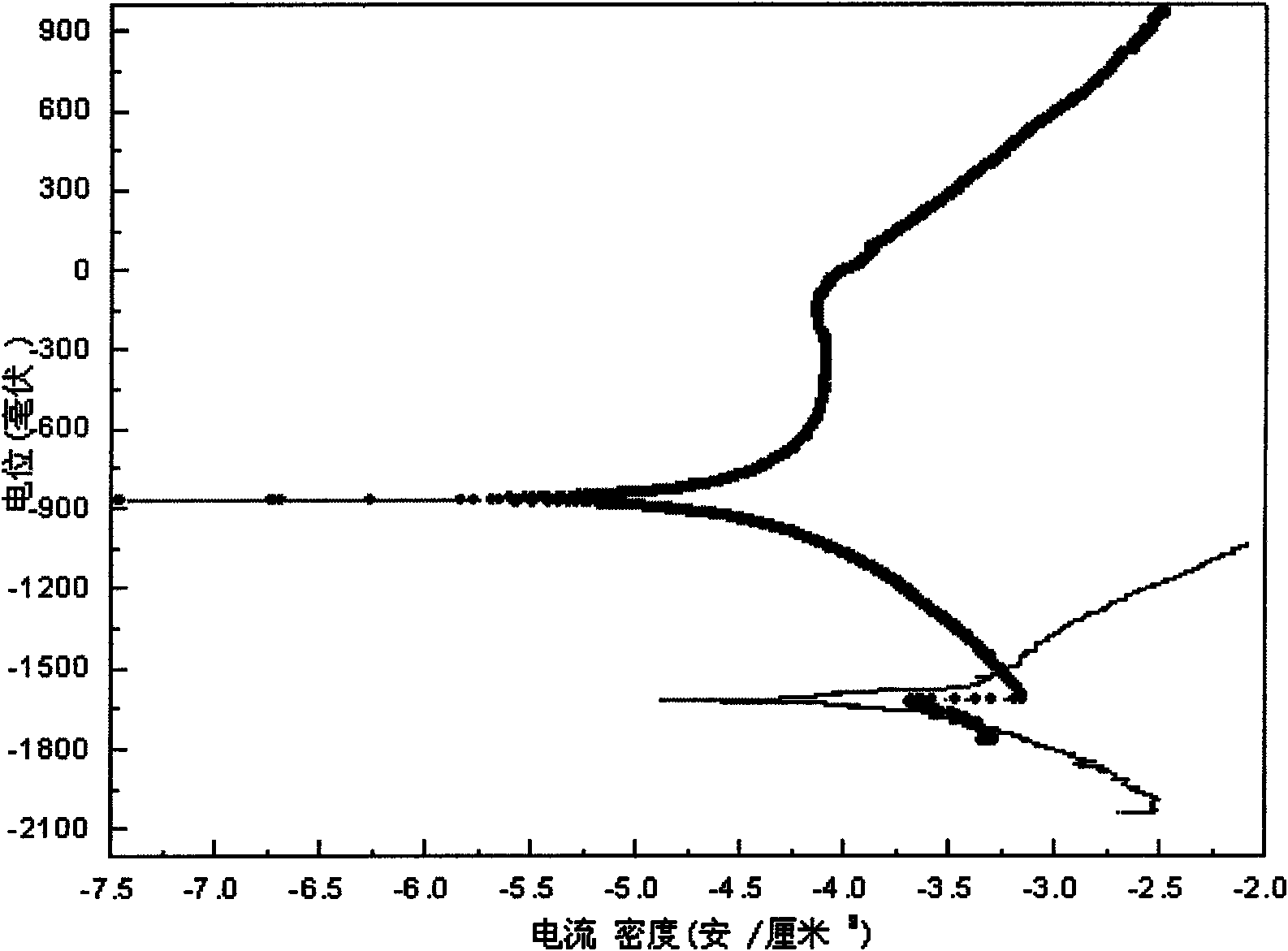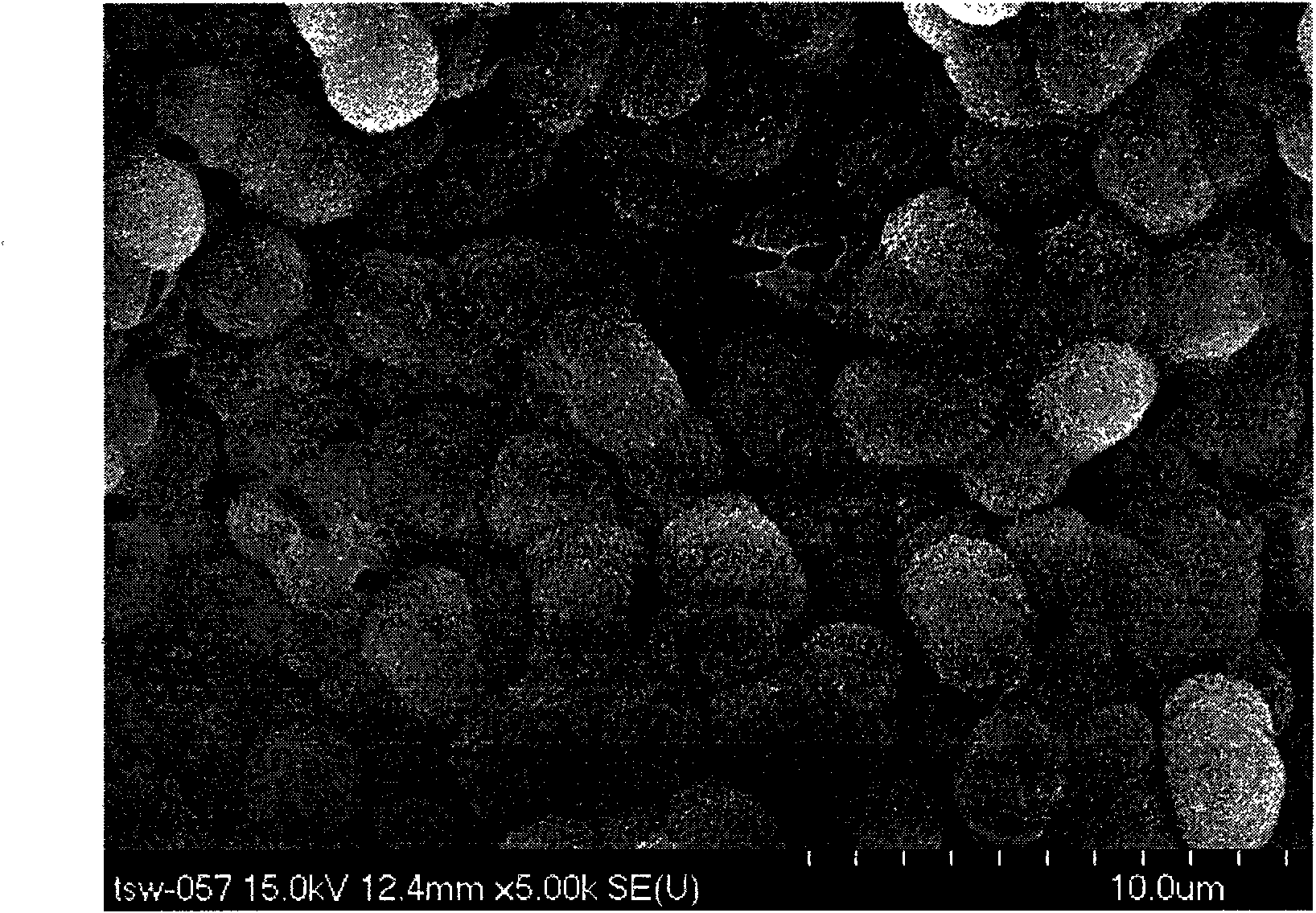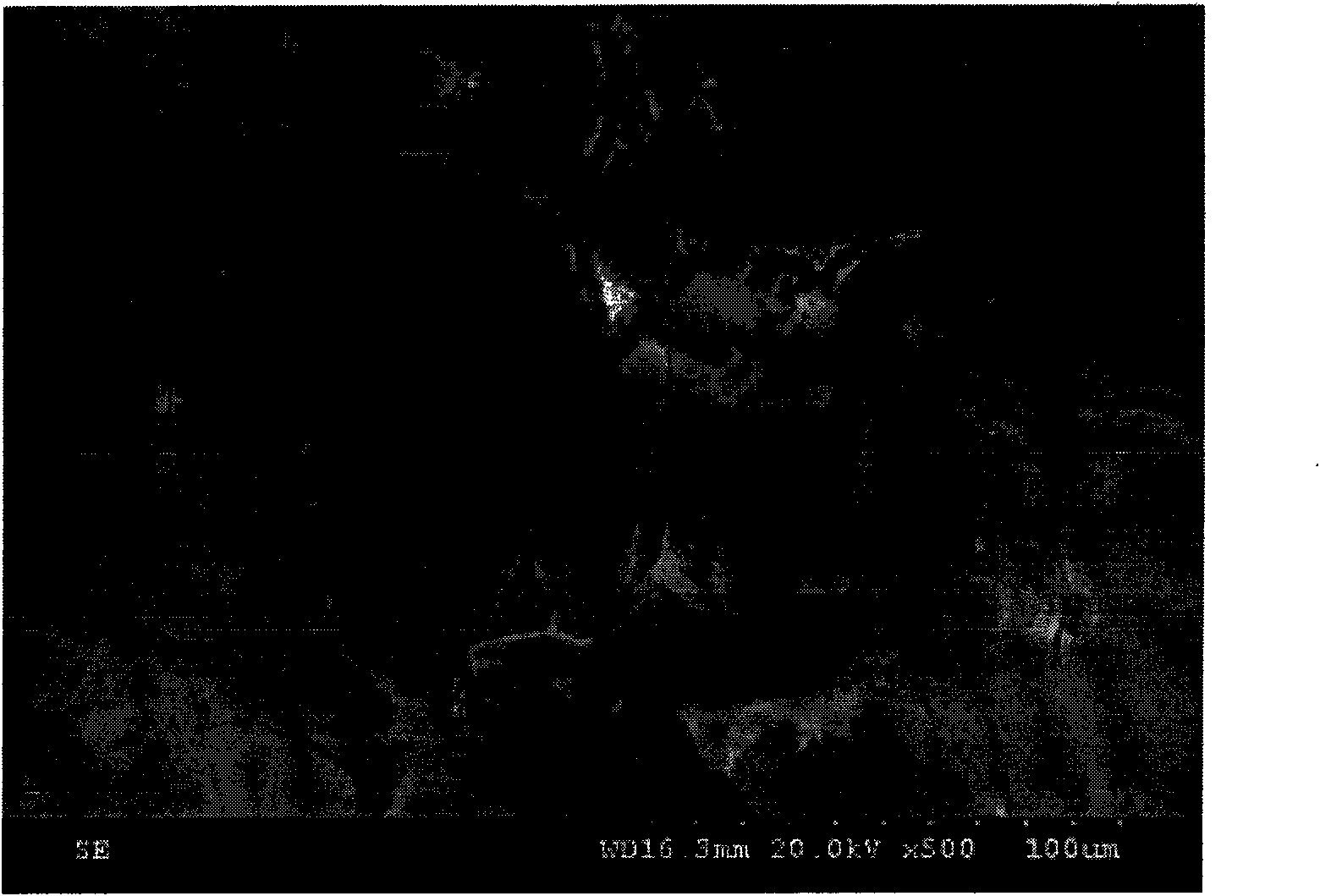Treatment method of magnesium or magnesium alloy surface
A treatment method, magnesium alloy technology, applied in the coating process of metal materials, etc., can solve the problems of loss of mechanical properties of magnesium and magnesium alloys, excessive degradation speed, local pH value increase, etc., to achieve corrosion resistance and biological activity The effect of improving, slowing down the degradation rate and reducing the loss of mechanical properties
- Summary
- Abstract
- Description
- Claims
- Application Information
AI Technical Summary
Problems solved by technology
Method used
Image
Examples
specific Embodiment approach 1
[0008] Specific Embodiment 1: The treatment method for the surface of magnesium or magnesium alloy in this embodiment is carried out according to the following steps: 1. Place the base metal in acetone or absolute ethanol solution for ultrasonic cleaning for 1-10 minutes, then rinse twice with distilled water, and then dry ; 2. Place the base material treated in step 1 in a NaOH solution with a concentration of 0.05 to 5.0 mol / L and a pH value of 12 to 14 for 0.5 to 24 hours, then rinse it twice with distilled water, and then dry it; 3. The base material treated in step 2 is placed in calcium nitrate solution, and then dipotassium hydrogen phosphate is added dropwise to the solution under the conditions of pH value of 5-7 and temperature of 20-47°C, and then standing for 10min-8h , form a layer of uniform calcium hydrogen phosphate dihydrate layer on the surface of the base metal, then rinse twice with distilled water, and then dry to complete the treatment of the surface of th...
specific Embodiment approach 2
[0011] Embodiment 2: The difference between this embodiment and Embodiment 1 is that in step 1, ultrasonic cleaning is performed for 5 minutes. Other steps and parameters are the same as those in Embodiment 1.
specific Embodiment approach 3
[0012] Specific embodiment 3: The difference between this embodiment and specific embodiment 1 is that in step 2, the solution is placed in a NaOH solution with a concentration of 0.5-4.0 mol / L and a pH value of 12.5-13.5 for 3-20 hours. Other steps and parameters are the same as in the second embodiment.
PUM
| Property | Measurement | Unit |
|---|---|---|
| corrosion potential | aaaaa | aaaaa |
Abstract
Description
Claims
Application Information
 Login to View More
Login to View More - R&D
- Intellectual Property
- Life Sciences
- Materials
- Tech Scout
- Unparalleled Data Quality
- Higher Quality Content
- 60% Fewer Hallucinations
Browse by: Latest US Patents, China's latest patents, Technical Efficacy Thesaurus, Application Domain, Technology Topic, Popular Technical Reports.
© 2025 PatSnap. All rights reserved.Legal|Privacy policy|Modern Slavery Act Transparency Statement|Sitemap|About US| Contact US: help@patsnap.com



